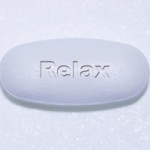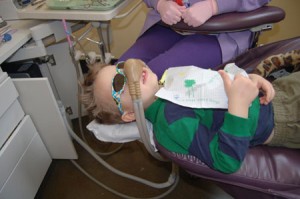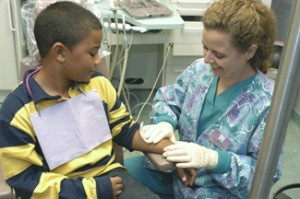Nowadays, with the advancement of Sedation Dentistry, your child is able to receive a comforting yet soothing dental treatment. It is believe that one of the most important aspects to cultivate a positive attitude towards dental treatment is to let the child experience minimum pain and discomfort at any circumstances. Many concerns are raised regarding this issue and hence, here are 8 Frequently Asked Questions about Conscious Sedation for your children.
Â
1. What is Conscious Sedation?
Conscious sedation is defined as a minimally depressed level of consciousness that retains the patient’s ability to independently and continuously maintain an airway; and responds appropriately to a physical stimulation or verbal command, e.g., “open your mouthâ€.
Â
The main goal of using Conscious Sedation during dental treatment for children and adolescents is to prevent the development of behavior management problems and dental anxiety due to unpleasant dental experiences. Patients are awake and conscious of what is going on but the sedative effect will make them less sensitive to unpleasant stimuli. Pain perception will be reduced as well since this is dependent on the anxiety level.
Â
2. Who needs Conscious Sedation?
Conscious Sedation is recommended when your child has:
- Â Â Â Â Â Â Â Â High dental fear, apprehensive or anxiety
- Â Â Â Â Â Â Â Â Inadequate coping ability
-         Children with special needs                             Â
- Â Â Â Â Â Â Â Â Needs examinations and treatments of moderate extent
- Â Â Â Â Â Â Â Â Very young children or Preschoolers
Â
If your child has very high dental anxiety and requires extensive or complicated treatments, he or she should be treated under general anesthesia.
Â
3. What are the different types of Conscious Sedation?
Conscious Sedation can be achieved by different drugs administered either by the oral, rectal, intravenous (IV) routes or by inhalation. However, the determination for any sedation is dependent on the amount of dental treatment, health, and cooperation of your child. Doctors will make the right decision based on your child’s specific needs and what is best for your child.
Oral Sedation
Â
Oral Sedation is one of the easiest methods and universally accepted. It is given to your child if he or she is very anxious or apprehensive. The medication is given to your child 15 minutes to 1 hour prior to the dental treatment. It acts as a ‘Sleepy Medicine’ and hence, your child may feel drowsy or even fall asleep but not unconscious. During the treatment, local anesthetic and Nitrous Oxide will be utilized for pain management and further comfort. Success rates are high with very few side effects and relatively low in cost.
Â
Some children are unable or unwilling to take an oral medication, the alternative routes will be rectal and nasal, but they are drawbacks with both of these. Rectal administration is connected with ethical problems and only applicable to very young children in collaboration with their parents. Nasal administration is effective but may cause irritation to the nose and it is very unpleasant for the child.
Â
Â
Inhalation Sedation: Nitrous Oxide-Oxygen Sedation
Â
Â
For inhalation sedation, Nitrous Oxide is the method commonly used and its high success rate and safety are well documented. Nitrous Oxide, also known as Laughing Gas, is a mixture of nitrous oxide and oxygen, which is administered to children to help them to relax while dental treatment is carried out. It is given through a small breathing mask which is placed over the child’s nose without putting them to sleep. Your child will remain fully conscious with all his/her natural reflexes intact at all times during the procedure.
Â
Nitrous Oxide is non-addictive, very safe, and has very few side effects. Sedation is normally achieved within 3 to 5 minutes and no injection is required because Nitrous Oxide itself has analgesic and anesthetic effects. After completion of the dental treatment, Nitrous Oxide can be quickly eliminated by giving Oxygen for 5 minutes and your child is ready to leave the dental chair.
Â
Intravenous (IV) Sedation
Â
Â
Intravenous Sedation is the most effective in fast response, effect, and possibility to adjust the dosage to an optimal level of effect. It is recommended if your child needs extensive dental treatment for a longer duration of time, whereby inhalation and oral sedation might not be enough to keep your child remain calm. Sometimes, it is also suggested for children with special needs or with medical complication. This procedure eliminates distress your child may endure and that dental treatment is completed safely and effectively.
Â




